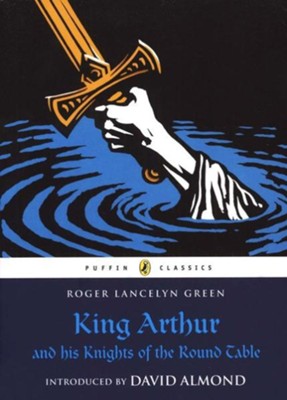
He compiled these novels of the Round Table together in his all-encompassing rendition, Le Morte d'Arthur. White - is a worthy successor of Thomas Malory. The Matter of Britain is primarily made up of new versions of older stories, which in turn are retellings of even older legends, dating as far back as the songs of the troubadours. Better yet, some episodes are rendered in a genuinely moving way: for instance, the tragedy of Tristan, the ordeals of the Grail nights and, most of all, the death of Arthur and his departure to Avalon (Frodo’s setting out to Valinor at the end of Tolkien’s masterpiece is an imitation of this ending) which is no small feat, since the Arthurian legends have multiple and, sometimes, conflicting sources from French, German and English medieval literature: Chrétien de Troyes, Béroul, Robert de Boron, Gottfried von Straßburg, Geoffrey of Monmouth, The Mabinogion, Wolfram von Eschenbach, and most of all, the massive 13th-century Lancelot-Grail Vulgate cycle.

The whole narrative feels seamless and thoroughly consistent. Lancelyn Green, mindful of his readership, toned down and ironed out the most explicit aspects (the sex and the gore) of these legends and the story is written in simple, slightly archaic, yet elegant prose. It covers the whole cycle: the story of Uther Pendragon, Merlin and Nimue, the youth of Arthur and the sword in the stone, the establishment of the Round Table at Camelot, the story of Tristan and Isolde, the Fisher King, the quest of the Grail and the adventures of Gawain, Percival, Bors, Galahad, Lancelot and Guinevere, and finally the plots of Morgan Le Fay and Mordred, the battle of Camlann and the end of the fellowship. Lancelyn Green’s book, however, is not a complete redesign of the old tales: instead, it is a straightforward and condensed retelling of the Arthurian legends, intended for young readers who are, for the most part, unfamiliar with this vast body of literature. White’s The Once and Future King… Let’s say that the romances of chivalry were all the rage in the 1950s - just as dragons and magic fantasies have been all the rage since the 1990s, with George R.R. King Arthur and His Knights of the Round Table was published a few years after World War II, around the same time as Tolkien’s The Lord of the Rings, Lewis’ The Chronicles of Narnia and T.

He is, nonetheless, one of the major popularisers of ancient myths and legends in English culture - Neil Gaiman recently acknowledged (in his introduction to Norse Mythology) that Lancelyn Green’s books profoundly influenced his early vocation as a writer.

Roger Lancelyn Green may not be quite as famous as his teachers and fellow Oxfordians, C.S.


 0 kommentar(er)
0 kommentar(er)
